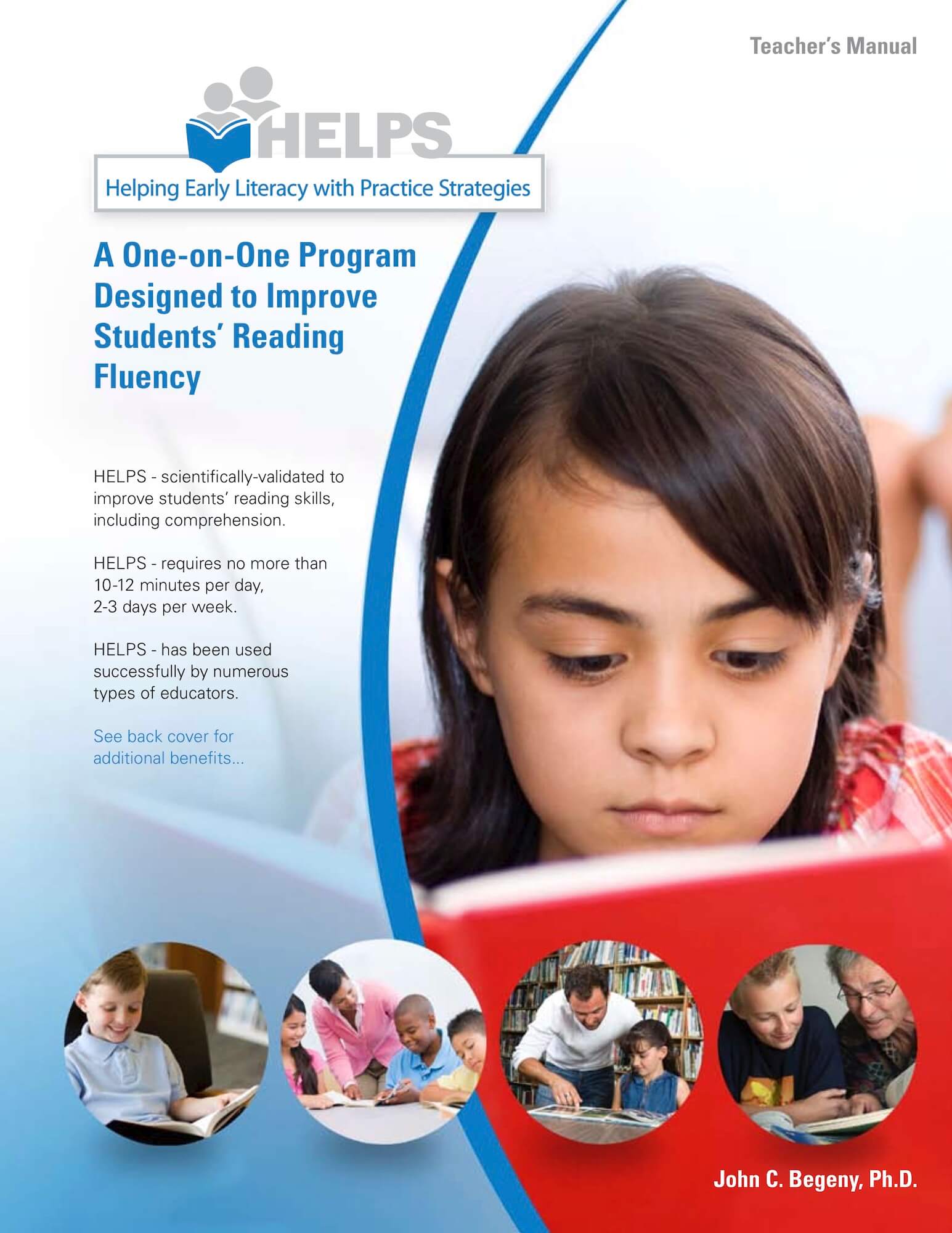Helping Early Literacy with Practice Strategies (HELPS) One-on-One Program

On This Page:
Teachers and reading researchers generally agree that essential components of early elementary reading instruction should target phonics, phonemic awareness, fluency, comprehension, and vocabulary. However, many educators and literacy experts have argued that reading fluency is commonly neglected as a part of a student’s core reading curriculum. In the United States, estimates suggest that at least 40% of fourth graders do not have strong enough reading fluency skills and this is a primary barrier to students’ proficiency with reading comprehension.
The main goals of HELPS are to strengthen a student’s reading fluency and confidence as a reader. As students improve reading fluency, they are better able to focus on and improve other important reading skills, including comprehension.
As is described in more detail below, HELPS is:
- Supported by rigorous research
- Appropriate for elementary school students and older learners
- Easy to access
- Feasible to use (for example, professional educators and other adults can implement it effectively and time-efficiently)
For the above reasons and many others, it is not surprising that HELPS has been used over the years with hundreds of thousands of students and implemented in more than 60 countries around the world.
If you would like to learn more about peer-reviewed studies related to HELPS research and development, <<please click here>>
Research Supporting the HELPS Program
HELPS is evidence-based because all of the instructional and motivational components of the program have been widely shown in past studies to effectively improve students’ reading.
Even more important, HELPS is research-validated because there have been more than a dozen rigorous evaluations of HELPS documenting its efficacy with students for whom the program is intended. These evaluations have been published in peer-reviewed scholarly journals and those interested in learning more about HELPS research and effectiveness may contact us or click here.
In addition to the many studies that have evidenced the effectiveness of HELPS, it is also included in the most recent nationally endorsed practice guide for early reading instruction. In this guide, published by the U.S. Department of Education’s What Works Clearinghouse, HELPS is highlighted as one of only a small number of reading programs that significantly improved children’s word reading, oral reading fluency, and reading comprehension.
Accessing the HELPS One-on-One Materials
The main materials for the HELPS One-on-One program include a Teacher’s Manual, a book of Teacher Passages, and a book of Student Passages. The Manual is required for learning how to implement all aspects of the program. The passages are a set of 100 systematically developed reading selections that students read as they progress through the HELPS program over time
For approximately the same cost of printing and assembling the three books yourself, our team at Helping Education can professionally prepare and ship all the materials directly to you. Not only do educators find this option convenient, but 100% of proceeds from sales of HELPS materials go toward our organizational mission—including our ability to develop and freely disseminate even more high-quality educational programs.
We send you all three books assembled professionally and ready to use. 100% of your purchase supports our mission!
Training for HELPS One-on-One Program
Low-Cost Workshops
The primary focus of HELPS trainings is to show educators how to successfully implement the program and to answer all questions. Also, attendees will have opportunities to practice implementing HELPS while our expert trainers provide feedback and support.
Other Ways to use HELPS
Frequently Asked Questions About HELPS
Please contact us if you have any questions that are not answered on this page or you simply want to talk with one of our HELPS experts.
